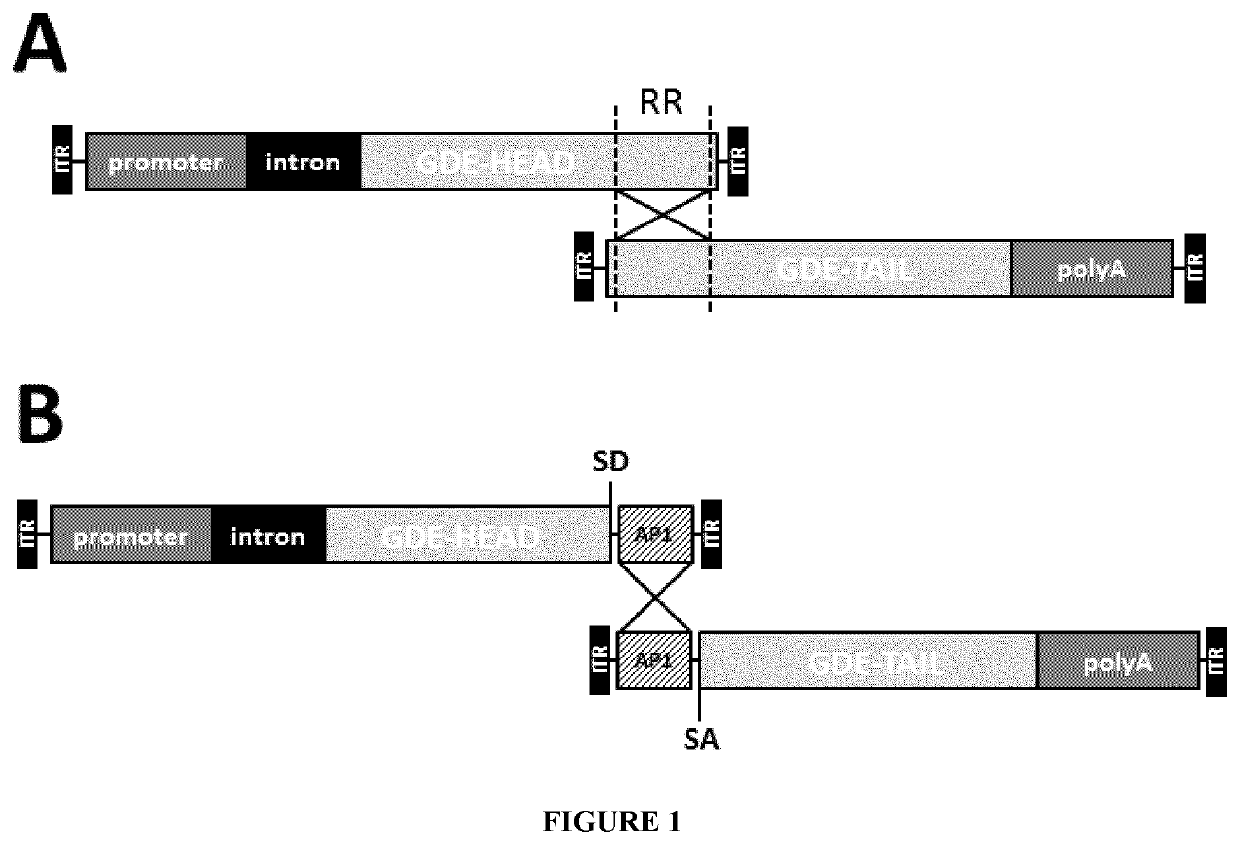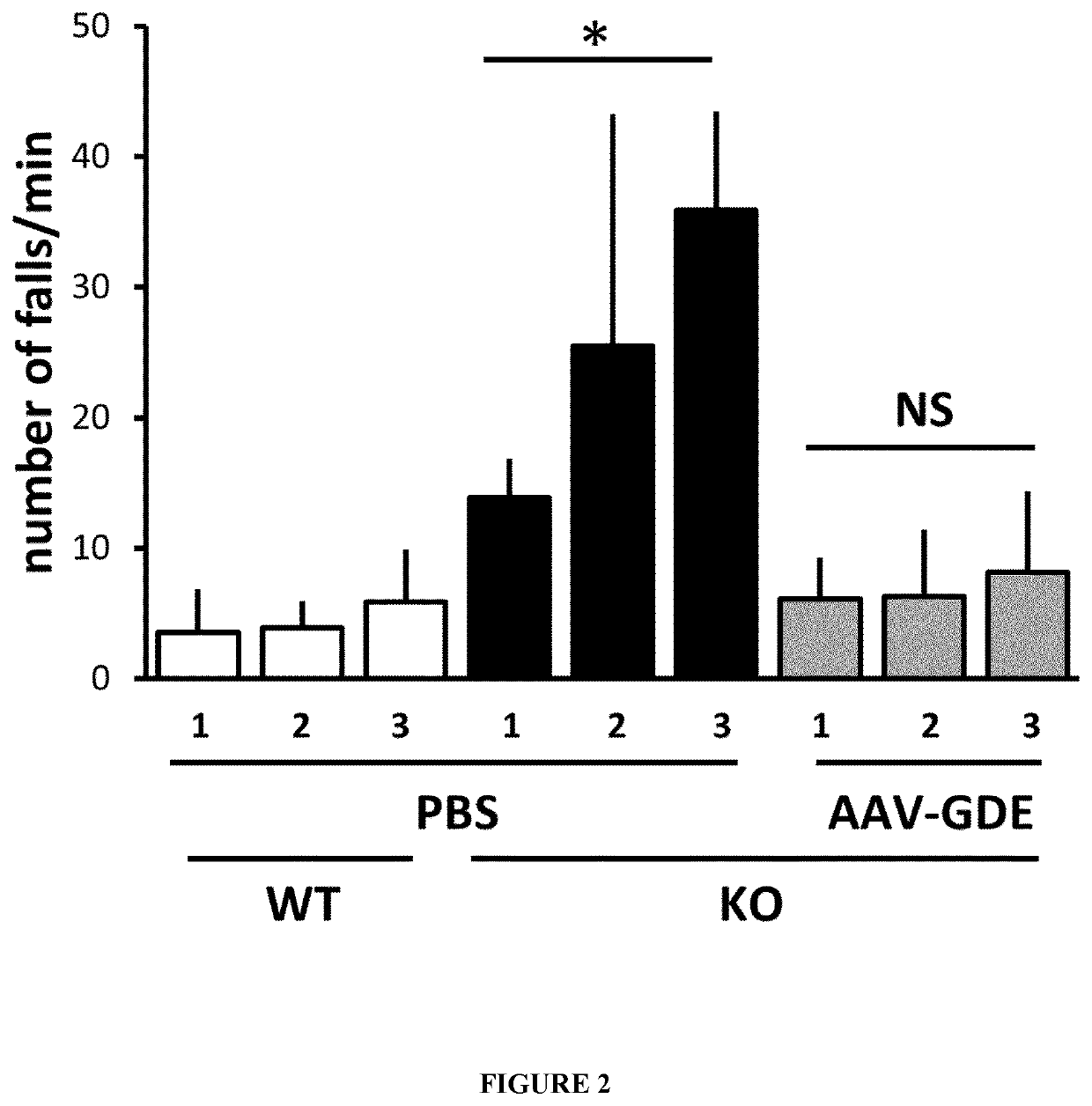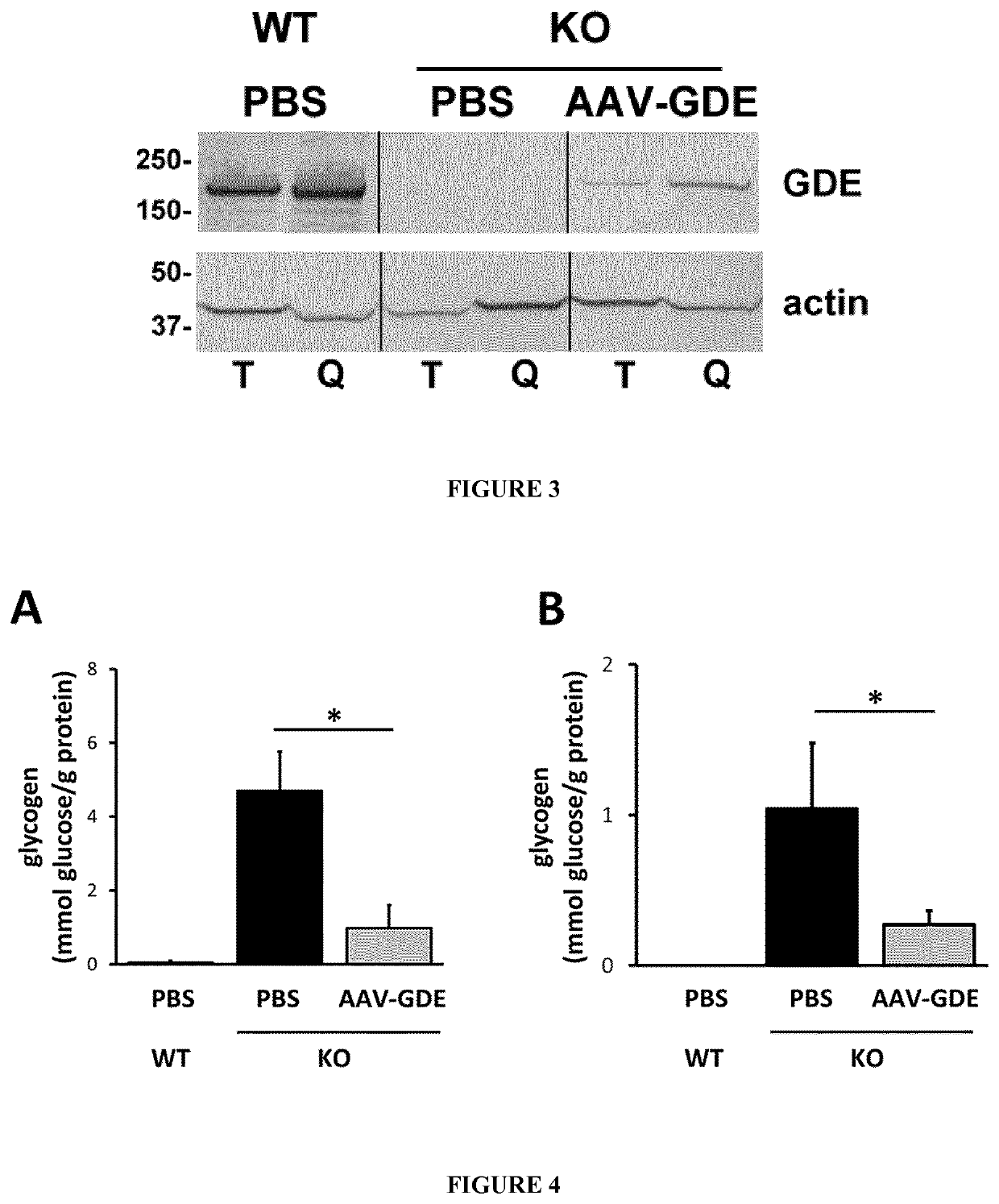Treatment of glycogen storage disease iii
a glycogen storage disease and glycogen storage technology, applied in the field of glycogen storage disease iii, can solve the problem of no effective treatment for the disease, and achieve the effect of reducing muscle glycogen accumulation and rescuing muscle impairmen
- Summary
- Abstract
- Description
- Claims
- Application Information
AI Technical Summary
Benefits of technology
Problems solved by technology
Method used
Image
Examples
examples
[0185]The invention is further described in detail by reference to the following experimental examples and the attached figures. These examples are provided for purposes of illustration only, and are not intended to be limiting.
[0186]Material and Methods
[0187]Glycogen Content
[0188]Glycogen content was measured indirectly as the glucose released after total digestion by amyloglucosidase. The glucose released was determined using a glucose assay kit by measuring the absorbance using an EnSpire alpha plate reader at 540 nm.
[0189]Western Blot Analysis
[0190]Mouse tissues were prepared as previously described (Amalfitano et al PNAS 1999). Briefly, 50-100 mg of tissue were weighed and homogenized in DNAse / RNAse free water, then centrifuged for 20 minutes at 10000×g. The supernatant was used in the following steps. Protein concentration was determined using the BCA Protein Assay. SDS-page electrophoresis was performed in a 4-15% gradient polyacrylamide gel. After transfer the membrane was b...
PUM
 Login to View More
Login to View More Abstract
Description
Claims
Application Information
 Login to View More
Login to View More - R&D
- Intellectual Property
- Life Sciences
- Materials
- Tech Scout
- Unparalleled Data Quality
- Higher Quality Content
- 60% Fewer Hallucinations
Browse by: Latest US Patents, China's latest patents, Technical Efficacy Thesaurus, Application Domain, Technology Topic, Popular Technical Reports.
© 2025 PatSnap. All rights reserved.Legal|Privacy policy|Modern Slavery Act Transparency Statement|Sitemap|About US| Contact US: help@patsnap.com



